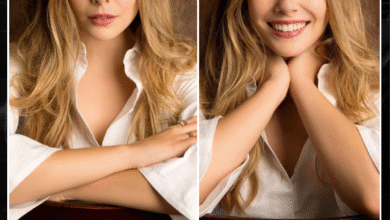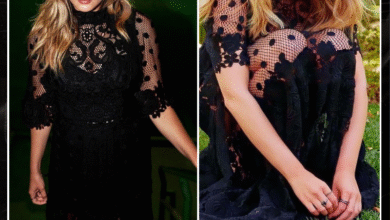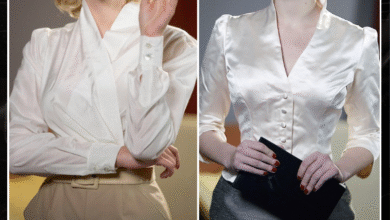The Role Marilyn Monroe Could Have Made Iconic—But Turned Down for Her Reputation!
OPINION: This article may contain commentary which reflects the author's opinion.
Marilyn Monroe, an icon of the silver screen, defined the 1950s and early 1960s as a beloved actress and model. Known for her “blonde bombshell” persona in films like Some Like It Hot (1959) and Gentlemen Prefer Blondes (1953), Monroe became one of Hollywood’s most famous and bankable stars. However, her career wasn’t without personal struggles and a desire to break free from typecasting. One of the most significant “what-ifs” in Hollywood history revolves around the iconic role of Holly Golightly in Breakfast at Tiffany’s (1961), a role that Monroe turned down despite it being tailored for her.
Career Context and Monroe’s Role Decisions
Monroe’s career began in modeling during World War II, which led to a contract with 20th Century Fox. She struggled early on to break into Hollywood and avoid being typecast in stereotypical roles. To make a name for herself as a serious actress, Monroe took decisive steps such as founding Marilyn Monroe Productions and enrolling at the Actors Studio. These efforts were aimed at refining her craft and distancing herself from the “dumb blonde” image that dominated much of her early work.
Her desire to be taken seriously as an actress was evident in the roles she chose, and she sought characters that allowed for depth and complexity. Monroe’s decisions regarding which roles to take on were also influenced by her public image, and she was careful about the types of characters she portrayed on screen.
The Role of Holly Golightly in Breakfast at Tiffany’s
The role of Holly Golightly in Breakfast at Tiffany’s was originally tailored for Marilyn Monroe, according to Truman Capote, the author of the novella on which the film is based. Capote saw clear parallels between Monroe and Holly, a young woman struggling with her own past and trying to navigate her identity. Both Monroe and Holly were orphans, grew up during the Great Depression, and were sexually exploited during their early years. The character was described as having features that closely resembled Monroe’s—“strands of albino-blonde hair,” “large eyes, a little blue, a little green,” and an upturned nose, which Capote felt would suit Monroe perfectly.
However, Monroe ultimately turned down the role, with advice from her acting coach, Paula Strasberg, playing a major role in the decision. Strasberg was concerned that taking on the role of a “lady of the evening” in a movie would damage Monroe’s carefully crafted public image. Monroe, who was already dealing with the challenges of her fame and her personal struggles, decided not to risk her reputation by playing such a controversial role.
This decision remains one of the most significant “what-ifs” in cinematic history. Although Audrey Hepburn’s portrayal of Holly Golightly became iconic, many believe that Monroe would have brought a unique and personal depth to the character, given their shared backgrounds and Monroe’s emotional range.
Evidence and Sources Supporting the Claim
Multiple sources corroborate the idea that Monroe was the first choice for the role of Holly Golightly. A BuzzFeed article listing actors who turned down iconic roles explicitly states, “Marilyn Monroe, not Audrey Hepburn, was who they wanted to cast as Holly Golightly in Breakfast at Tiffany’s.” This aligns with the information found in Far Out Magazine and Collider, both of which highlight Monroe as the intended actress for the role before she declined it.
The role of Holly Golightly, a character navigating loneliness, love, and self-discovery, could have been a transformative one for Monroe. While Hepburn’s performance remains iconic and beloved, Monroe’s version could have been just as groundbreaking, offering a more personal, troubled interpretation of the character.
Other Roles Monroe Might Have Turned Down
While Breakfast at Tiffany’s remains the most well-known role Monroe turned down, some sources hint at other roles she might have declined or not pursued. For example, a trivia page on notstarring.com lists several films that Monroe may have passed on, but there is less detailed information available about these potential missed opportunities. Monroe’s decision to not take on certain roles, particularly those that may have been too similar to her established persona, suggests that she was always careful about maintaining a balance between her artistic ambitions and her public image.
The Impact of Monroe’s Decision
Monroe’s refusal of the role of Holly Golightly speaks volumes about her inner conflict and desire to break free from the confines of her Hollywood image. Her decision was likely a reaction to the intense scrutiny she faced as a public figure, and it is understandable that she might have been wary of portraying a character who could have been seen as too scandalous or reflective of her own personal struggles.
Interestingly, Monroe’s hesitation to take on the role of Holly Golightly contrasts sharply with Hepburn’s portrayal. Hepburn, who was already an established star by the time Breakfast at Tiffany’s was made, brought a lightness, elegance, and charm to the role, making it a defining moment in her career. Hepburn’s portrayal became so synonymous with the character that many audiences today can hardly imagine anyone else in the role. Still, the question remains: what might have been if Monroe had taken the part?
Conclusion: A Hollywood What-If
In conclusion, the role that Marilyn Monroe turned down, and which remains a defining moment in Hollywood lore, is Holly Golightly in Breakfast at Tiffany’s. Monroe’s decision to forgo the part was influenced by her acting coach’s concerns over her image, but it remains one of the most significant “what-ifs” in film history. While Hepburn’s portrayal is iconic, Monroe’s potential interpretation of the character, given her personal connection to the story and her emotional depth, would have brought an entirely different dimension to the role. Monroe’s choice to steer clear of this role reflects the complexities of her career and her struggle to balance her public persona with her artistic ambitions.



